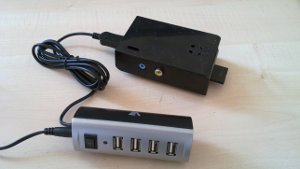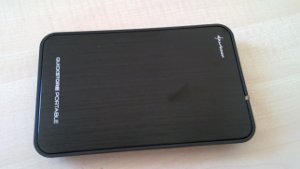ArchivistaBox Version 2014/X
Egg, 22 October 2014: The ArchivistaBox 2014/X comes with many interesting innovations. The Archivista boxes Rigi and Säntis offer expanded volume, refined data backup, and the backed up data can now be very easily checked with the ArchivistaBox Backtel. In addition, scanning in existing files has been considerably simplified.

New volume for the Archivista boxes Rigi and Säntis
The introduction of the Archivista box Dolder significantly reduced the price of an Archivista box. As a reminder: The ArchivistaBox Dolder basic package costs 300 euros, with a volume of 20,000 documents and 20 GB of data. In view of this, the previous ArchivistaBox systems Rigi and Säntis appear relatively expensive, even though the hardware is certainly more powerful in the latter two systems. For this reason, the ArchivistaBox systems Rigi and Säntis now offer new volume:
- ArchivistaBox Rigi: 40,000 documents plus 30 GB of data.
- ArchivistaBox Säntis: 80,000 documents plus 50 GB of data.
These two Archivista boxes are available at the same price as before and yet offer significantly higher performance.
Backing up data couldn’t be easier.
A unique data backup concept was already available in the form of Restore-on-the-fly. Each USB hard disk with a backup can also contain the operating system of the ArchivistaBox. If such a hard disk is booted using a commercially available computer, the data backup can be checked at any time without backup restoration as the ArchivistaBox is booted in the main memory (RAM). Thus the data are integrated with the backup disk on-the-fly.
This concept has proven fundamentally successful. However, two fundamental problems arose in recent months. First, commercial computers today no longer contain a BIOS (keyword UEFI). Therefore, booting from an external hard drive on a commercial computer is either no longer possible or possible only when suitable changes are made to the BIOS. This is likely to overwhelm many customers. Besides, making changes to the BIOS can cause the computer to no longer boot the system already set up by Microsoft. Secondly, Restore-on-the-fly had to be configured to the extent that the IP characteristics had to be determined – and this also represented a hurdle for normal users.
For these two reasons the Restore-on-the-fly concept has been expanded. Now, every ArchivistaBox can be used for booting the backup drive. The special version of the ArchivistaBox that is installed on the backup drive checks whether the backup drive is connected to an ArchivistaBox. If this is the case, the IP characteristics of the connected ArchivistaBox are used, i.e. manual configuration is not necessary – the backup can be checked directly this way. After the backup has been examined, it is sufficient to restart the ArchivistaBox in order to continue working with the existing ArchivistaBox.
 ArchivistaBox Bachtel for all DMS cases
ArchivistaBox Bachtel for all DMS cases
Can checking the data backup (ArchivistaDMS) be any easier than described above? Yes, because with the ArchivistaBox Bachtel, an existing ArchivistaBox does not even require a restart. Further, it does not need to be ensured that the boot process takes place from this hard drive.Simply attach the backup drive to the ArchivistaBox Bachtel and boot this, and the backup drive can immediately be checked in real time.
With the innovative price of CHF 150.00 or EUR 120.00, the ArchivistaBox Bachtel fits every budget – and every pocket thanks to its 100 gram size. An active 4-port USB hub is included in the price of the ArchivistaBox Bachtel so that external hard drives can also be connected when the power requirement of the external drive is too high for the USB port of the ArchivistaBox Bachtel. The ArchivistaBox Bachtel is suitable for all ArchivistaDMS customers.
 For a further CHF 90.00 or EUR 75.00, formatted backup drives can be purchased by those who do not find formatting the hard drive easy (even though there is separate menu item available for it on the ArchivistaBox). The ArchivistaBox Bachtel plus two backup drives can thus be purchased for CHF 330.00 or EUR 275.00. Note: The hard drives require no external power supply, but must be used with the USB hub of the ArchivistaBox Bachtel so that the drives receive enough power.
For a further CHF 90.00 or EUR 75.00, formatted backup drives can be purchased by those who do not find formatting the hard drive easy (even though there is separate menu item available for it on the ArchivistaBox). The ArchivistaBox Bachtel plus two backup drives can thus be purchased for CHF 330.00 or EUR 275.00. Note: The hard drives require no external power supply, but must be used with the USB hub of the ArchivistaBox Bachtel so that the drives receive enough power.
Time-delayed text recognition and scanning in existing files
In principle, it is desirable for the text recognition (OCR) to be performed directly after scanning. This makes less sense if lengthy documents are to be scanned, in which not all pages can be captured in one go. For example, with Fujitsu document scanners (which we highly recommend), pages can be pushed in directly during the scanning infeed process — yet even in this case it is sometimes easier if the pages are captured in multiple stages. This creates multiple files that must be combined into one file later on. Confusion can be caused by the fact that combining is only possible if all documents were processed with the text recognition.
Now it is possible to initiate the text recognition after a time delay of only a few minutes. During this time, additional pages can be attached directly via the scan profiles to existing files. Afterwards, multiple scanned partial documents do not need to be combined into one document, nor is there a problem with temporary failure to merge the documents, precisely because the text recognition is processing one of the documents to be merged.
New text recognition (OCR): Tesseract 3.04 and Ocrad 0.25
The two open source text recognition programs (OCR) Tesseract 3.04 and Ocrad 0.25 are also new in Version 2014/X. These replace the previous Tesseract 2.04 and Cuneiform 0.95. Why this switch was made, what level of quality the two new OCR engines provide, and many more questions (and issues) are answered in the updated script “OCR Recognition under Linux, Part II (GermanI”.

